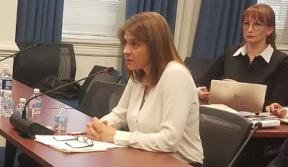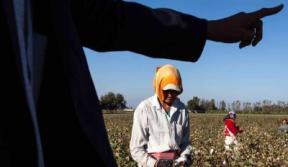
Speech given at the III Global Conference on Child Labour, Brasilia, Brazil, October 9, 2013.
I am grateful for the opportunity to speak on behalf of my organization, the International Labor Rights Forum and as a representative of the US Child Labor Coalition, where I chair the international committee. Brothers and sisters in the fight against child labor, we are making progress, but the progress is not enough. There are still 168 million child laborers; 85 million of them toiling under hazardous conditions.[1]
I want to congratulate Brazil on its progress in reducing the incidence of child labor.
Fifteen years ago I had the good fortune to organize a conference on labor standards and corporate accountability in Sao Paulo. We were lucky to have Oded Grajew, the founder of Abrinq Foundation and a leader in the fight against child labor in Brazil. He spoke eloquently and with commitment about how reducing child labor in Brazil would require reducing inequality as well.
Today, we see progress in Brazil in both the reduction of inequality[2] and the reduction of child labor. Sadly, this is not the case in my country, the US, where inequality has been increasing since the 1970s,[3] and we are still not able to push through basic protections for the child laborers who continue to toil in US fields.
So even though the new ILO statistics show that child labor is highest in poor countries, there are still hidden pockets connected to poverty in rich countries. Clearly, this is a fight we all share.
In the fight against child labor, we need to address the root causes of child labor; to improve the income, the livelihood opportunities and the health of the parents of child laborers. In short, we need to raise the price that farmers earn and the wages workers receive. It is not enough to take the children out of the fields. We need to look at their welfare and future opportunities.
The ILO reports that 60 percent[4] of child labor takes place in the agricultural sector. So I ask that we all look at agriculture policies holistically; at how to improve rural life and recognize the skills and dignity of farmers and farm workers.
Brothers and sisters, the conference declaration makes clear that we all have a responsibility to continue the fight against child labor: government, employers, trade unions and NGOs. But in the fight for decent work and a more equitable sharing of prosperity, it is the employers who have a disproportionately greater influence – especially the global corporations.
And here I want to address the governments of the poorest countries where the work to eliminate child labor is most challenging. We, the civil society groups from rich countries, do not call for greater employer accountability for protectionist reasons. To the contrary, we are working to pressure global corporations – most of them based in rich countries – to invest more, to pay better, to help improve the livelihoods of workers in their supply chains, and to join us in reducing inequalities in all the countries where they have a presence.
I know this is a big ask of global corporations, but the UN Guidelines for Business and Human Rights, referenced in the conference declaration, presents a new opportunity and another shared responsibility:
- To push for greater corporate due diligence on company’s impact on human rights;
- To collaborate on risk assessments of the potentially detrimental impacts of industries;
- To work transparently and build knowledge; and
- To not just take children out of work, but to reduce the risk of families finding themselves forced to send their children to work.
So I hope that we can go forward from this third Global Conference on Child Labor with a clear plan and a set of goals for each of the sectors where child labor is prevalent and most dangerous.
In the case of agriculture, where 60% of child labor is found, I want to build out a four-point plan, outlined by Sue Longley from the IUF.[5] Because the majority of child labor is found in agriculture, we need to:
1) Develop agriculture policies that are centered on the right to food and the right to decent work, aligning government policies, civil society analysis and corporate risk assessments to make these effective;
2) Recognize and build the skills of farmers and farm workers. Their knowledge is great; it is generations deep and they are, after all, on the front lines of climate change. Valuing their skills and improving their opportunities for technical advancement can both help increase their income and empower their voice in environmental stewardship.
3) Expand legislation on child labor and all labor rights to cover agricultural workers and ensure they have the same protections as workers in all industries.
4) Define commitments among governments, employers, worker organizations and civil society in order to improve the laws and policies that protect child laborers and their families.
It is only by defining clear goals and commitments to not only end child labor but also prevent children needing to work that we will fully win the fight against child labor.
[2] The GINI coefficient for Brazil has been steadily decreasing for the past decade. In 2001 it was 60.1, and in 2012 it was 51.9: http://www.indexmundi.com/facts/brazil/gini-index
[3] http://www.theatlantic.com/business/archive/2012/12/a-giant-statistical-round-up-of-the-income-inequality-crisis-in-16-charts/266074/
[5] The International Union of Food, Agricultural, Hotel, Restaurant, Catering, Tobacco and Allied Workers’ Associations (IUF)

